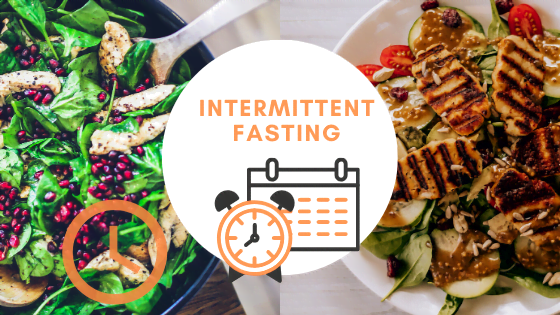Intermittent fasting is an eating pattern where you cycle between periods of eating and fasting. It gives all the benefits of fasting on a regular basis as you are fasting repeatedly in a cyclic manner. “Intermittent fasting” or “IF” was the top-trending diet search in Google in 2019, according to Google Trends data.
Intermittent Fasting does not put restrictions on which foods to eat, but rather on when you should eat them. There are several different intermittent fasting methods, all of which split the day or week into eating periods and fasting periods. No solid food is allowed during the fasting period, but you can drink water or non-caloric beverages.
When you start fasting, “You will feel hungry, but it’s a healthy hunger.” says Dr. Satchin Panda (Leading expert in the field of circadian rhythm research). After three to four hours of not eating, when the body is depleted of sugar, it is ready to tap into the carbohydrates that get stored in your liver, which is actually a good thing, says Panda. “It’s like having a house full of stuff,” he says. “Unless you get rid of it, you shouldn’t go shopping.”
Overnight fasting is a different story: By morning, in the last four hours of our fast, we are literally burning fat. “And that fat is converted to ketone bodies, which is going to fuel our brain and heart,” says Panda. Ever tried those expensive hydroxybutyrate supplements that promote fat-burning and mental clarity? “Your body is producing 50 to 100 grams of the same stuff you’re buying,” says Panda. “But for free.”
Humans live on one quarter of what they eat; on the other three quarters lives their doctor.
Anonymous
Intermittent Fasting Techniques
Methods of Intermittent Fasting
The 5:2 Method of Intermittent Fasting
In this method you can have your regular diet for 5 days of the week and then for 2 days of the week, eat only about 500–600 calories. This diet is also called The Fast Diet and was popularized by British journalist Michael Mosley. On fasting days, it’s recommended that women eat 500 calories and men eat 600 calories.
Eat Stop Eat Method of Intermittent Fasting
Eat-Stop-Eat involves a 24-hour fast, either once or twice per week. This method was popularized by fitness expert Brad Pilon and has been quite popular for a few years.
For example, if you finish dinner at 7 p.m. Monday and don’t eat until dinner at 7 p.m. the next day, you’ve just done a full 24-hour fast. You can also fast from breakfast to breakfast or lunch to lunch. The end result is the same.
If you’re doing this to lose weight, it’s very important that you eat normally during the eating periods. As in, eat the same amount of food as if you hadn’t been fasting at all.
The potential downside of this method is that a full 24-hour fast may be fairly difficult for many people. However, you don’t need to go all in right away. Starting with 14-16 hours and then moving upward from there is fine.
The 16/8 Method of Intermittent Fasting
The 16/8 method requires one to fast for 16 hours each day. For example, eating between noon and 8 pm. This method is also known as the Leangains protocol and was popularized by fitness expert Martin Berkhan.
In some variations of the 16/8 method, daily fasts of 16 hours for men and 14-15 hours for women. Each day you’ll restrict your eating to an 8 to 10-hour “eating window” where you can fit in 2, 3, or more meals.
Variations of Intermittent Fasting
Then there are many other variations like
- The ADF (Alternate Day Fasting, 36/12 hrs fast/feed),
- The Warrior Diet (20/4 hrs fast/feed), and more.
For most people – It is an incredibly safe, effective, and sustainable way to lose weight, boost energy levels, reduce hunger, and optimize health. Check out here for more information on who should and shouldn’t fast.
Conclusion
The method of intermittent fasting is an individual choice and “one method for all” doesn’t apply. Each one of us is different, what suits one might not work for the other.
The most popular ones are the 16/8 method, Eat-Stop-Eat, and the 5:2 diet. Pick anyone that works for you.
All the Benefits of Fasting apply to intermittent fasting as well, few more benefits which need a mention are:
